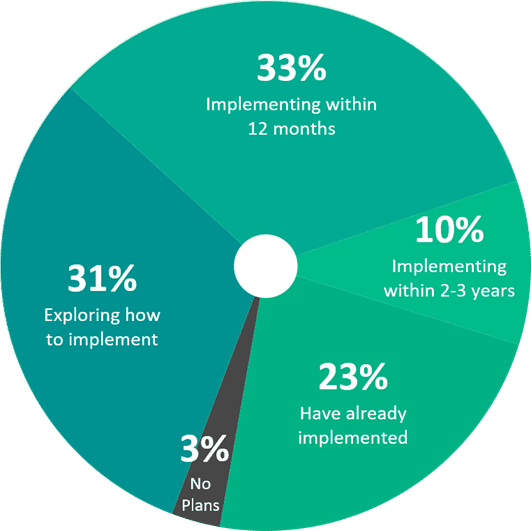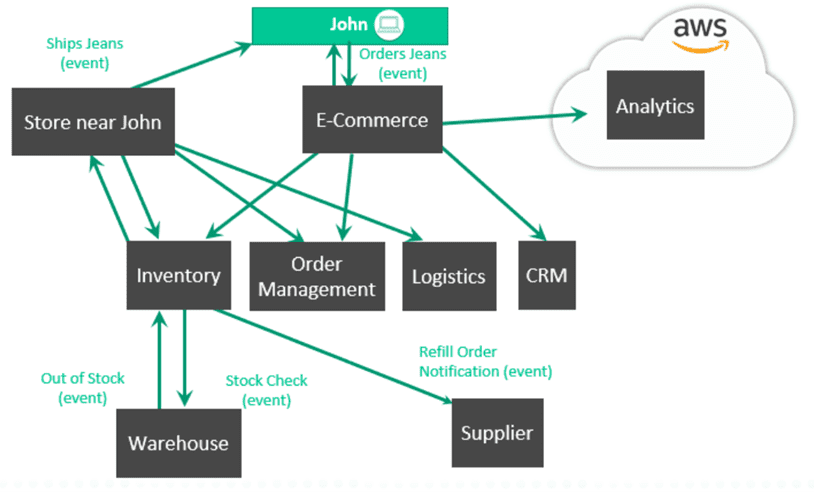
In this emerging age of omnichannel retail, where customers seek, compare, and buy products not only in stores but online and via mobile devices, retailers must have a 360-degree view for inventory management, across channels, that’s up to date at all times. They need this to offer an excellent customer experience by not selling products that aren’t actually available, streamline restocking processes to make sure newly available inventory is made purchasable right away, and reduce “retail shrinkage,” especially the loss of high value products.
Many, however, find it difficult to synchronize inventory data across their entire operation, i.e. throughout their supply chain, sitting in distribution warehouses, in transit on trucks, and in store. This can lead to issues where an e-commerce site accepts an order for something that’s out of stock, a store promotes a product that’s stuck on a truck with a flat tire, or inventory of perishable product goes to waste because it was available yet showed as out of stock.
Such problems are the result of distributing inventory data either in periodic batches, say at the end of the day, or upon request, i.e. when a system asks for it. In either case, there can be considerable delay between the time a product arrives at the store, or a customer orders it, and the updating of other systems. In many cases the problem is exacerbated by geographic distance — to learn about the challenges of integrating the remote edges of retail operations, read this blog post.
Before they can take advantage of event-driven architecture to modernize inventory management across channels, retailers must put in place a pair of fundamental capabilities:
- A way of automatically observing and reporting the movement of inventory. Radio frequency identification (RFID) is an essential element of real-time inventory management, as it enables retailers to know exactly where products are. RFID tags on products are detected by scanners at the ingress and egress points of all kinds of buildings and vehicles.
- A way of knowing and even predicting where inventory will be needed. The many e-commerce options made available as part of omnichannel retail, such as buy online pick up in store and buy online return in store, (BOPIS and BORIS, respectively) means retailers need to make sure inventory is continuously allocated to the areas, distribution warehouses, and stores where it’s needed. To do this they need to implement artificial and machine learning algorithms that learn how different patterns and pricing strategies affect demand and allocate inventory accordingly.
With those pieces of the puzzle in place, the requirement then is to ensure information generated by RFID tracking is routed in such a way that people and AI/ML algorithms can make smart inventory management decisions.
Event Enabling Omnichannel Inventory Management in Retail with EDA
The best way for retailers to modernize their inventory management system to meet the needs of omnichannel commerce is embracing event-driven architecture (EDA), a way of building IT systems that enables the continuous real-time synchronization of inventory and other information across the many elements that make up modern retail businesses. It is also a key ingredient behind making retail real time.
You can learn how retailers are using EDA to improve customer experience by reading this summary of survey results which reveals, among other things, that 2/3 of retailers have already implemented EDA, are implementing it now or within the next few years.

Figure 1: The state of retailers and their plans to leverage real-time data, from The Reality of Real-Time Retail: Survey Shows EDA Critical to Improved CX for Retailers
An event is an action or change of state. In retail, some examples of events are a customer buying or returning a products, or just looking at it online if you’re tracking web activity, products being received at a distribution center, or a truck reporting a mechanical failure that will cause it to arrive later than expected.
This diagram shows the potential value of tracking events across retail operations thanks to a modernized event-driven inventory management system.

Figure 2: A sample retail scenario showing the flow of inventory and other information across retail organizations.
In any case, with EDA, applications or devices that detect events immediately publish information, and the system passes it along to any and all applications, devices or people that have indicated interest in that kind of information.
The Rest of the Requirements for Real-Time Inventory Management Success
The third and fourth things retailers need to modernize their systems so they can achieve real-time omnichannel inventory management in retail are:
- A way of streaming data about the location and movement or sale of inventory across their business. Event streaming is enabled by something called an event mesh that is made up of event brokers. An event broker is an intermediary piece of software (sometimes called “middleware”) that routes information between systems, and they can be linked to form an event mesh. Applications that detect an event send a message about it, which is described by a “topic” that indicates what it’s about. That publisher doesn’t need to know who’s interested in it, where they’re located, nothing, because the event mesh takes care of delivering it to every app, device or person who has “subscribed” to information with that topic.
- A way of managing event-driven flows of information. Event management is like API management, but for the asynchronous, event-driven world. It’s a set of tools that let developers and architects design, discover, catalog, publish and visualize events and event-driven applications to really maximize their value to the enterprise.

Advantages of Event Enabling Inventory Management
Modernizing your inventory management with RFID, AI and event-driven architecture eliminates delays to ensure that every event that impacts inventory is immediately known by all systems and parties that need to know about it. This can improve inventory availability and fulfillment accuracy, and improve customer experience by making sure their expectations are always met.
Explore other posts from category: Retail

 Alecia O'Brien
Alecia O'Brien




